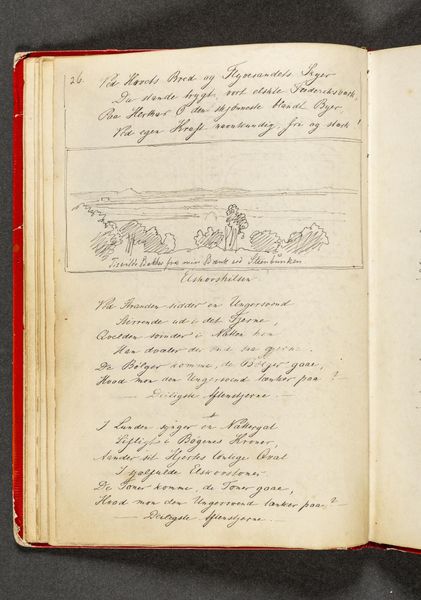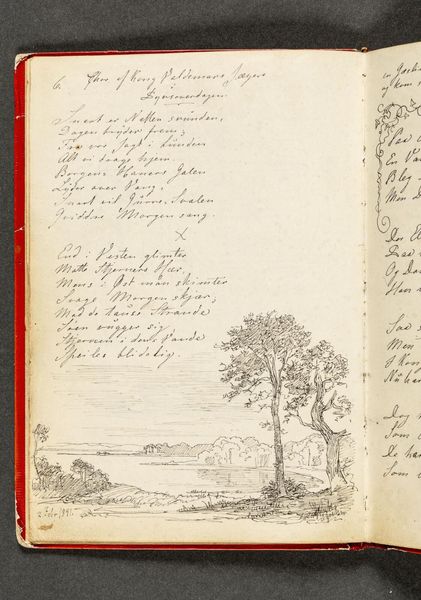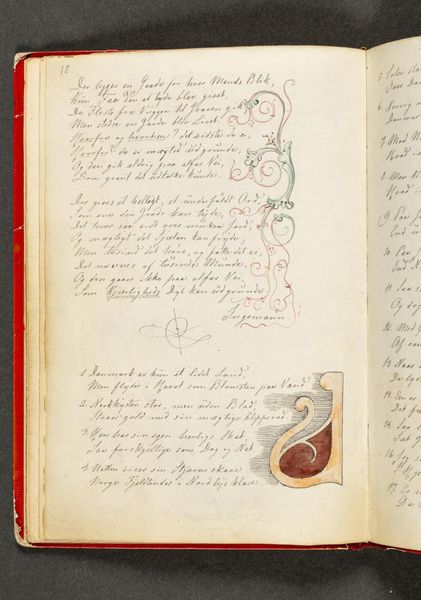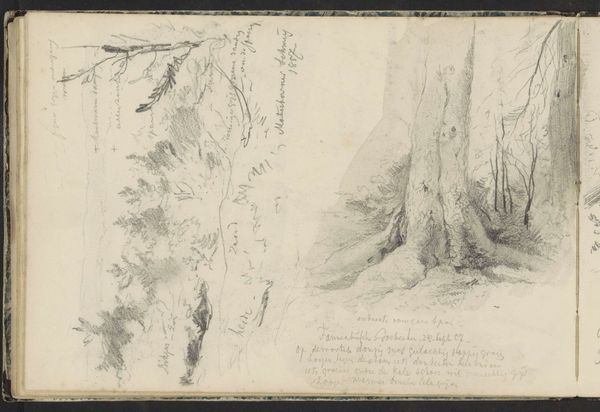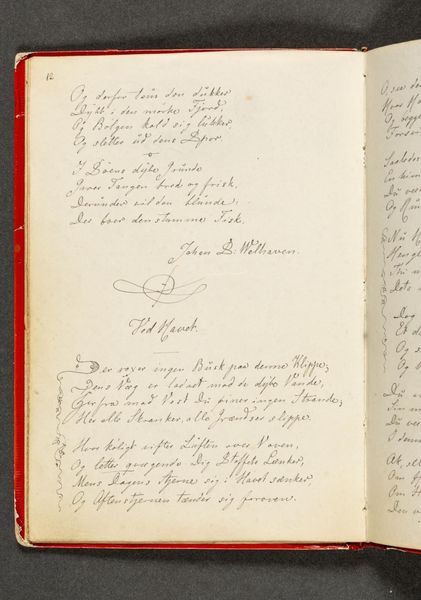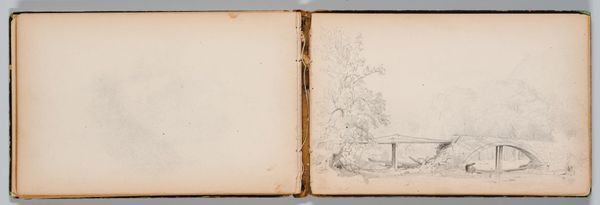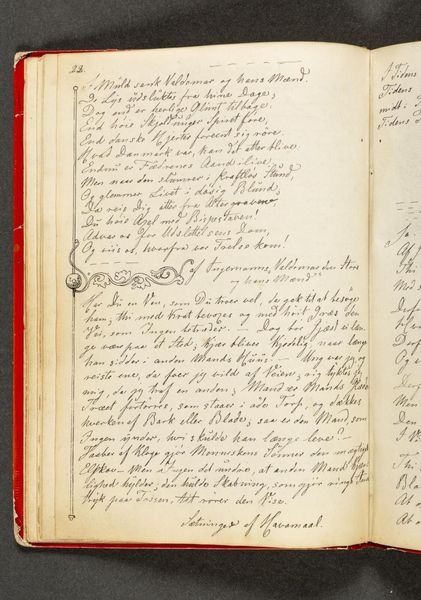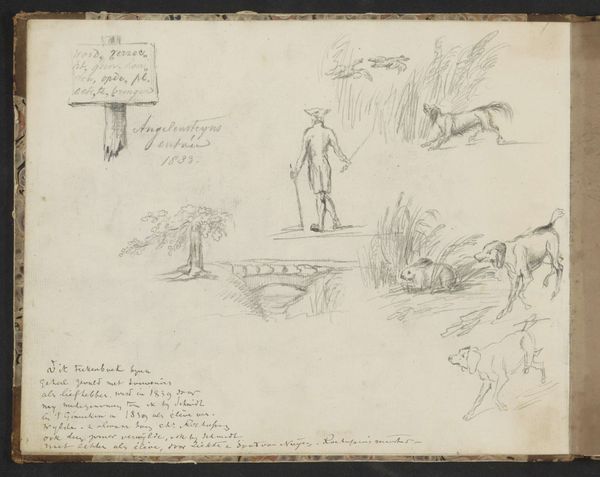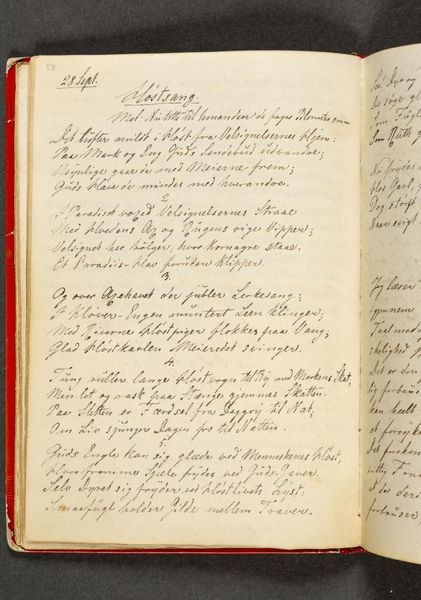
Moselandskab med en bro. Et ornamentslyng samt vers. Side 24 1841
0:00
0:00
drawing, paper, pencil
#
drawing
#
landscape
#
paper
#
romanticism
#
pencil
Dimensions: 192 mm (height) x 133 mm (width) (bladmaal)
Editor: So this is Johan Thomas Lundbye’s "Moselandskab med en bro. Et ornamentslyng samt vers. Side 24," made in 1841. It's a pencil drawing on paper. It strikes me as so quiet, almost dreamlike, with its soft lines. What stands out to you? Curator: For me, it’s about recognizing the specific cultural moment. Lundbye, deeply embedded in the Romantic era, wasn’t just drawing a landscape; he was participating in the construction of Danish national identity. Think about it: What does it mean to depict a specific bridge and landscape at a time of rising national consciousness? Editor: So, it's not just a pretty picture, but a political statement of sorts? Curator: Precisely. Consider that Romanticism wasn't only about celebrating nature's beauty, it was very much also used in constructing ideas around "the nation." Lundbye's landscapes invite the viewers to imagine Denmark’s land, and in a way to consider Danish belonging, rootedness, and a specific landscape. How might the inclusion of text, poetry even, function within this aim? Editor: The text would add to that sense of shared identity. I guess focusing on a specific local landscape reinforces that national pride, especially with the poetry grounding it in Danish culture and heritage. It’s really powerful when you view it with that perspective. Curator: Absolutely. Recognizing that landscape painting can serve such crucial political functions really opens our eyes to how seemingly simple artworks play a role in constructing complex cultural narratives. Editor: I'll definitely view landscapes with fresh eyes from now on. It is exciting to analyze these works in their specific socio-political contexts!
Comments
No comments
Be the first to comment and join the conversation on the ultimate creative platform.
